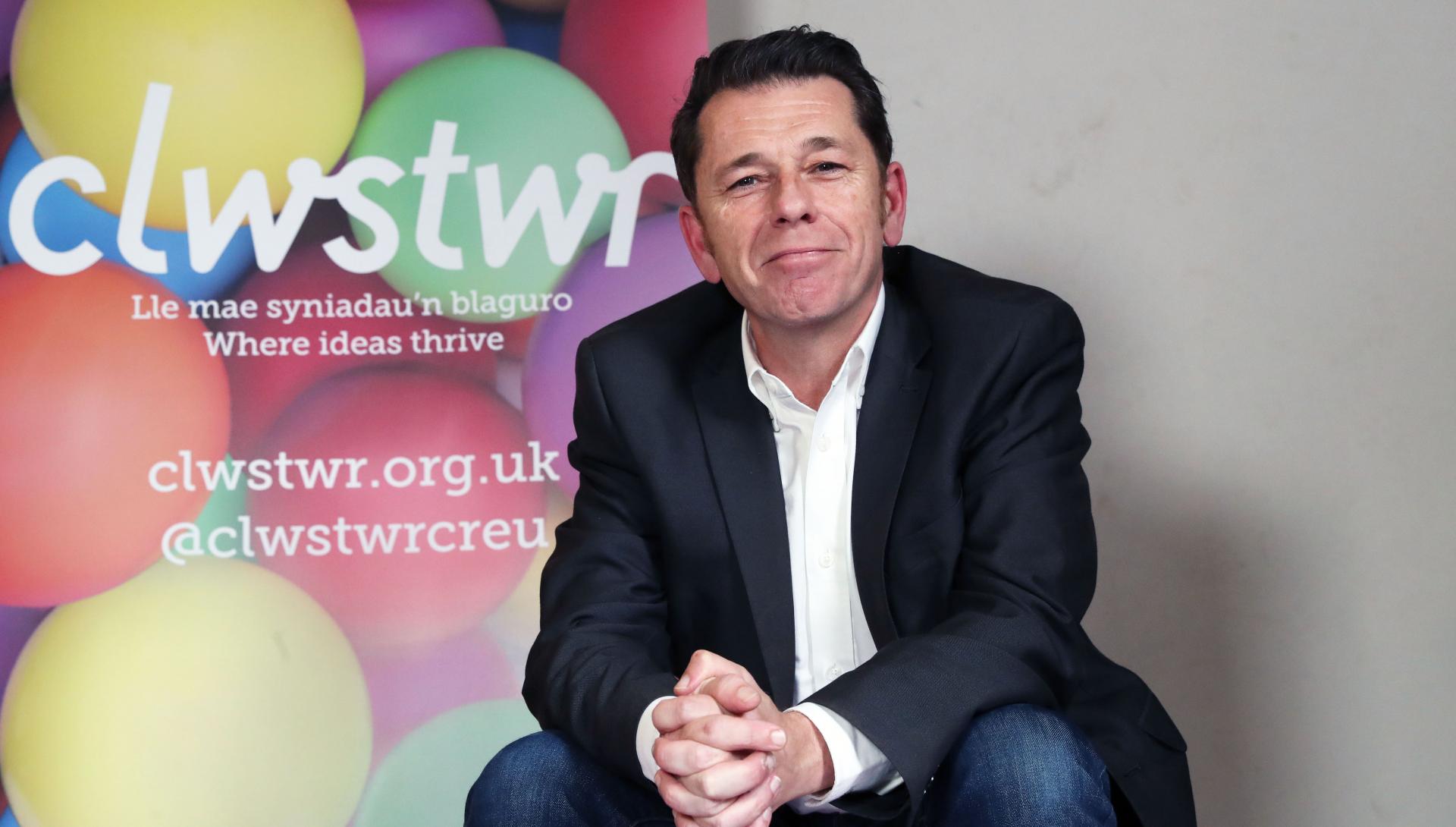About Bombastic
Bombastic is a company that explores the interface between live arts and digital media through dance, theatre and technology. Its theatrical productions for families and school groups blend performance with projected visuals, dance-drama workshops and digital online games.
Most of Bombastic's early work was live arts based
For about ten years after launching in 2007, I focused mainly on live arts with some sort of digital element. I enjoy using new softwares to fuse and interact with live performance; it’s something that went down well on our national tours for large audiences and schools.
There came a point where I wanted to look beyond the live arts touring system
Being project-funded by the Arts Council Wales, I wanted to look at new arms to the business, such as creating projects for different formats or platforms. This led Bombastic to move towards a new phase about five years ago, starting with an R&D project with Nesta exploring digital interactivity for schools.
Previous R&D laid the groundwork for our Clwstwr project
We developed a prototype for a digital, web-based, interactive platform. We wanted the platform to make it possible to provide interactive digital arts sessions in primary schools, where all the devices spoke to each other, communicated information and captured data on children’s performances. It was also an experiment around what type of digital film content we could create to push our own filmmaking ambitions forward.
After demonstrating the prototype at an education conference, I saw room for growth
I realised that the platform had the potential to combine the curriculum, the arts and digital learning. I also realised that it could, with further development, provide a way for teachers to create and share their own content, rather than us creating all of the content for the platform. The whole primary school education system is changing in Wales, and will prioritise the expressive arts as one of six priority areas. We wanted to further develop the prototype to marry the creative, practical and digital in a useful, flexible platform for teachers and pupils to use.We applied to Clwstwr for funding to do the next R&D phase
As part of the application, we brought in a tech partner, Proper Design, to help us with the technical side of things. Together, we reflected on what the platform was at that point and decided the specific stages to research next. We received £50,000 of funding from Clwstwr, with the aim of completing the project in six to 12 months.
The first stage of our project focused on refining the platform
Bombastic and Proper Design spent time identifying potential users and decision makers, as well as the key aspects that would make the platform valuable to our users – from the pupils to the teachers and the potential wider context of future users outside primary education. After doing some mind maps to make sure we were on the same track, we began two phases that ran in conjunction. Proper Design developed the architecture of the software while I researched the curriculum and the educational content. We had a clear schedule, with the goal being to go into schools for several rounds of user tests and to obtain user feedback during our research.
We had three main user tests planned in schools, but the pandemic changed things
We designed the first test, which was to look at the rudiments of the platform’s architecture with both a group of teachers from Cardiff and in 3 Swansea primary schools. It’d involve going into primary schools to demonstrate the platform in collaboration with the teacher, who would run the session then provide feedback. When we were developing the second round of tests, which was to look at how we could make the platform user-friendly, the pandemic started. We knew then that it wouldn't be possible to do physical, classroom-based user tests.
We took the opportunity to see if the platform could be used for remote learning
The lockdown gave us a chance to test the platform with teachers, seeing its online and remote learning possibilities. We've also had the opportunity to try using the platform, which we’ve since named ‘Poli’, as part of a live streaming commission that we streamed into schools this Summer. That’s something we didn't expect to be able to do at this stage of the R&D, and it gave us a lot of useful data.
From a user perspective, we now have enough proof of the need for the platform
We’ve been encouraged by the feedback and the response, which has moved the technical things onwards. Because this project was extended a lot, I had more time to reflect how the curriculum changes might work best with different formats on the platform. I've realised that there's more potential for the platform to have practical interactive workshop sessions, where we guide teachers and pupils through creative exercises or suggest ways that creativity can link to the curriculum.
We have plenty to move on to and are excited about the future of Poli
From our R&D, we can see the path towards making Poli a real, working, commercially viable platform. Our next steps will include testing different formats of content and the difference between live physical intervention and digital intervention in the classroom. We’ll also find an appropriate way for teachers to track pupils’ progress and look at how we collate, store and disseminate the pupils' information to the teachers.

